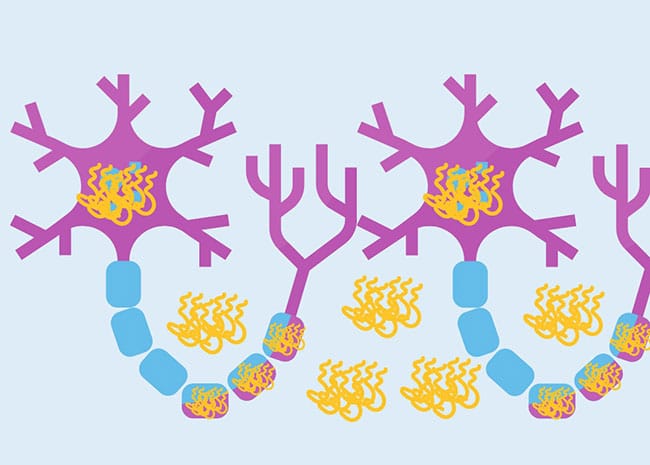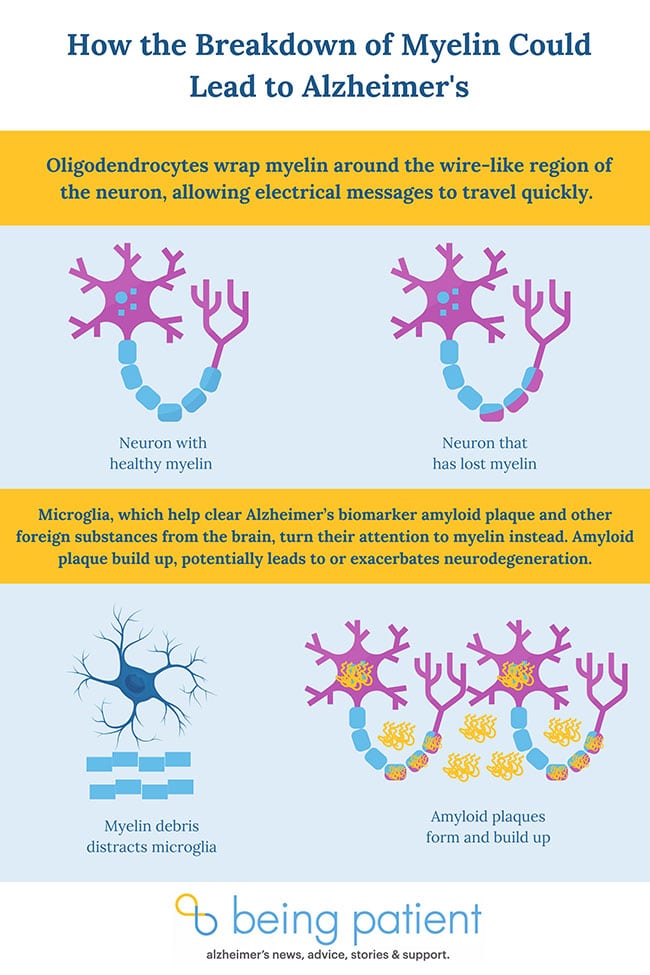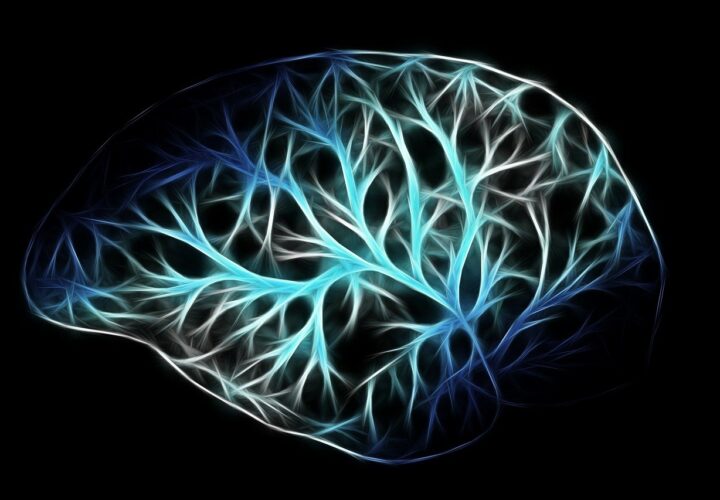Brain cells called oligodendrocytes wrap protective sheaths around neurons. But when that protection starts to break down, it may distract the brain’s cleaning crew, microglia, leaving room for a key Alzheimer’s biomarker to flourish.
Remember what happened the last time you sat down to finish your taxes — a task which is both necessary and boring? First, you start looking through your computer for all the files and information you’ll need to fill out these forms. You’re distracted by the pinging of a notification: A new cat rescue video is up on YouTube. Before you know it, you’ve spent several hours watching animal videos instead of doing your taxes.
The very same process of distraction may be occurring on the cellular level during Alzheimer’s. When amyloid plaques — hallmarks of Alzheimer’s — form, immune cells in the brain called the microglia activate and clear them.
Another glial cell, called the oligodendrocyte — which provides the electrical insulation for neurons — also dies during aging, releasing debris called myelin.
Debris from oligodendrocytes are like cat videos in this analogy. Instead of clearing the amyloid plaques, the microglia are instead distracted: They go after this myelin instead.
To better understand the role of oligodendrocytes in Alzheimer’s disease, Being Patient spoke with postdoctoral researchers Constanze Depp and Ting Sun, who studied these cells in mouse models during their work at the Max-Planck Institute.
Oligodendrocytes and Myelin in Alzheimer’s
During their graduate studies, Depp and Sun worked in the laboratory of Klaus-Armin Nave at the Max-Planck Institute, who investigated all the additional functions of oligodendrocytes.
“Previous work in our lab has shown that oligodendrocytes not only provide electrical insulation,” Depp told Being Patient, adding that these cells also support the health of the neuron.
Oligodendrocytes wrap a membrane sheath composed of myelin proteins over an elongated region of the neuron called the axon, helping send electrical signals faster. Ting explained that this sheath is very dense — it wraps around the axon several times, which may make it especially vulnerable to damage.
“When myelin is not functioning properly, the axons develop swellings,” Depp said. These swellings are like small bumps or bruises on the axon, which in turn accumulate amyloid plaques.
In brain scans, scientists have observed these same kinds of axonal swellings in Alzheimer’s.
Additionally, the myelin sheath produced by the oligodendrocytes also breaks down with age, luring activated microglia away from other targets like amyloid.
“We called it the microglia distraction hypothesis,” Depp said. To study this process, Depp and Ting recapitulated demyelination and amyloid plaques into their mouse model. They found that as the myelin surrounding the neurons breaks down as amyloid plaques accumulate.
“They [microglia] are equipped to recognize the amyloid plaques, however, they still get distracted by the myelin,” Ting said. On a cellular level, the microglia in their Alzheimer’s model, which included myelin breakdown, were ready to clear amyloid plaques. But, like someone distracted by cat videos, these microglia are lured away from urgent tasks by a more appealing protein.
Where to Next?
Many researchers believe that the buildup of amyloid plaques leads to brain cell death and the cognitive deficits we see in Alzheimer’s. This is called the amyloid hypothesis. As myelin distracts microglial cells, this allows amyloid to accumulate — and that, in turn, leads to more myelin defects.
“We know from MRI studies that myelin tends to degenerate from the fifth sixth decade of life,” Depp said. In humans, the regions of the brain with less myelin are also more vulnerable to amyloid buildup.
Therefore, the researchers believe, promoting the health of these myelin sheaths could be an important preventative target for Alzheimer’s. After all, if the myelin stays intact, it won’t have a chance to distract microglia from cleaning up amyloid plaque.
Many of the factors that reduce the risk of Alzheimer’s — like the Mediterranean diet and exercise — also promote myelin health. In yet another link, scientists have found that drugs for multiple sclerosis, which promote myelin health, reverse cognitive dysfunction in a mouse model of Alzheimer’s.
While there aren’t currently any Alzheimer’s trials targeting myelin, it remains an important factor in brain health — and it is worth a closer look in the search for early treatments.




